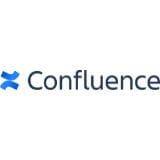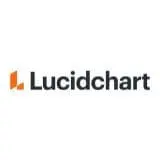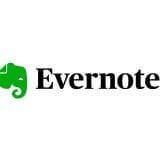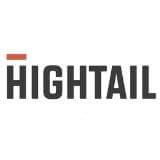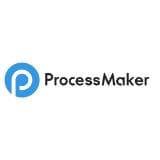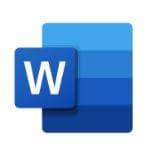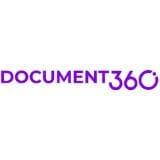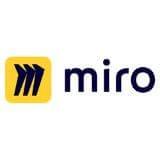- Free Version: Available for teams of up to 10
- Pricing: Premium plan $24/month (with free 30-day trial period)
- Platforms supported: Available on mobile app (iOS and Android) or a web-based software
Why Use SafetyCulture?
SafetyCulture is a process documentation software used across multiple industries to help professionals with their business processes and project management. With SafetyCulture, managers and professionals from all fields can create process documentation files and track their processes as they go about their work. SafetyCulture offers an intuitive checklist builder for those who want to create checklists specific to their business processes, but there are also free templates in the Public Library that can be used and modified as needed. Similarly, existing business process documentation can also be uploaded to the SafetyCulture platform to be transformed into a checklist.
Additionally, managers and team leaders can easily lay out their plans with their team and improve their workflows by adding their members to a checklist and sharing other relevant templates with them through the cloud. Managers can also edit group permissions to protect company and team confidentiality by only allowing a specific set of people access to the team or company’s SafetyCulture account.
With SafetyCulture being a cloud-based and web-based platform, everything that happens on it is immediately saved and stored in the cloud in real-time. This allows for an easy, streamlined way to access, edit, and refer back to one’s documents, even after much time has passed. This is best used by teams across all industries.
Features:
- Monitor employee growth and task progress by scheduling days to conduct inspections on business processes and ensure compliance with rules and standards in place
- Share problems, noncompliance with processes, or other things of concern found during an inspection by raising Issues, assigning Actions to a specific team or member, and providing a Heads Up
- Can be used on Android and iOS mobile devices
- Integrate sensor readings and other monitoring devices to SafetyCulture templates for seamless documentation
- Connect to popular business software such as Tableau, PowerBI, Sharepoint, Microsoft Outlook, Gmail, and more
- Export accomplished inspection reports and checklists as PDF, Word, or weblinks for easier sharing and saving
- Generate analytical reports based on accomplished checklists and inspections to view data at a glance and look for points of improvement in existing processes
Why Use Confluence?
Confluence is an online workplace and process documentation software that business owners and team managers can use to share information with their employees. With Confluence, teams can collaborate on different pages and projects, helping one another keep track of their team and individual business processes. Confluence can also serve as an archive of process documents for later reference. This software is also best for creating long-form and collaborative process documentation files within a team or organization.
Features:
- Multiple organized spaces to help sort different projects and documents possible
- Templates and layouts available for use to better organize pages
- Accepts integrations with Jira, Google Drive, Notion, and more
- Free Version: Free for ten users or less
- Pricing: The paid plans start at $5.75 per user per month
- Platforms supported: Web, iOS, and Android
Why Use Lucidchart?
Lucidchart is a process documentation software focused on visualizing processes to make them more understandable. Here, processes can be explained and shared with teams through the help of easy-to-create and customize graphs, diagrams, and flowcharts. This software is best used by those who want a visual representation of their business processes.
Features:
- Each individual element on a graph, diagram, or flowchart can be commented on
- Its cloud-based system assures users of no file being lost and that all changes are saved in real-time
- Files can be downloaded in different formats such as PDF, PNG, and JPEG
- Free Version: Free for one’s first three editable documents
- Pricing: The paid version starts at $7.95 with no limit to the number of editable documents and with access to other features
- Platforms supported: Web, iOS, and Android
Why Use Evernote?
Evernote is a note-taking and storage software that many businesses use as a process documentation software. Team managers can create and track their workflows in Evernote through its workspaces, where members can note their active projects, tasks, calendars, and process pipelines. These said spaces can also be used to store and manage other documents related to workflow and process documentation, then shared with the whole organization or team. This software is best used by teams that like using notes for tracking and documenting processes.
Features:
- Assign different tasks to employees through the software and track their progress
- Track all updates in a document, project, to-do list, or process through a workspace’s “Updates” tab
- Scan printed documents to turn them into digital notes and store them in the cloud
- Search for text in documents and handwritten notes
- Free Version: Free plan available but with limitations
- Pricing: Paid plans start at $8.99 a month
- Platforms supported: Web, iOS, and Android
Why Use Hightail?
Hightail is a document management and process documentation software targeted toward creative businesses. Hightail offers a platform where changes and processes can be easily tracked and documented by collecting the annotations and versions created from edits in one place. The conversations made by the assigned people or reviewers per task or element of a project can also be saved to aid the process documentation process and give context to specific steps. This software is best for teams in the creative industry.
Features:
- Send large files in and out of the organization
- View all project discussions, tasks, and deadlines in one place
- Integrate with Microsoft OneDrive, Dropbox, and Google Drive
- Sync creative projects with an Adobe plugin for faster reviews
- Free Version: Free version available but with limitations
- Pricing: Paid plans begins at $12 a month
- Platforms supported: Web, iOS, and Android
Why Use ProcessMaker?
ProcessMaker is an open-source process documentation software that is also often used for the automation of business processes. This software documents processes through the data entered by its users and automates it as directed, ensuring all tasks are completed and instructions are followed. ProcessMaker is best for automating workflows, documenting processes, and coordinating with stakeholders.
Features:
- Drag-and-drop process documentation visualizer to easily create flowcharts symbolizing certain processes and steps
- Design forms to gather and capture data, show data from other systems, and create approval screens for managers and other heads to check
- Accept or reject decisions related to processes from one’s emails
- Use their Business Activity Monitoring (BAM) feature to alert staff and stakeholders in real-time when certain business processes are met without needing reports or charts
- Free Version: Not available
- Pricing: Dependent on the organization’s needs, contact ProcessMaker for more info (with a 30-day free trial)
- Platforms supported: Web, iOS, and Android
Why Use Microsoft Word?
Microsoft (MS) Word is an all-around document creating, sharing, processing, and managing software that can be used for a wide array of purposes. It is known as a basic process documentation software as it has all the necessary to list down processes, visualize them, and keep track of their progress. MS Word is used by many people for basic documentation processes, making it an accessible software.
Features:
- Documents done in MS Word can be exported in DOCX and PDF formats
- Elements such as shapes, images, and 3D models can be inserted into documents
- Language translation available in documents
- Online version accessible, allowing for collaboration among team members
- Free Version: Yes, but with limitations
- Pricing: The paid version of MS Word is priced at $159. With the Microsoft 365 Suite, prices start at $6.99 a month
- Platforms supported: Web, iOS, and Android
Why Use Document360?
Document360 is a knowledge base and process documentation software focused on sharing processes among business owners, their staff, and customers. Through this software, users can create portals, spaces, and sites where businesses and teams can store and consolidate all their tasks, processes, and goals to manage them better and share them around. Document360 also, by default, tracks all revisions done into its system, making it easier to note the changes in a process. This software is best sharing and creating wikis and other long-form documents with internal and external teams.
Features:
- Artificial Intelligence (AI)-powered search engine which indexes all content in real-time
- Built-in markdown editor for creating pages and organizing content
- Performance chart to show which articles got the most traffic and reactions
- Free Version: Free plan available with limitations
- Pricing: Paid plans start at $99 per project per month
- Platforms supported: Web, iOS, and Android
Why Use Gluu?
Gluu is a business process management and process documentation software for managing multiple tasks, projects, and goals. Gluu helps businesses understand their tasks and manage their process documentation through its organizational and task flow maps, dashboards, and feedback system. This software is best for users who want a multipurpose business management processing software.
Features:
- Use the process designer for maps’ labels and roles to clarify responsibilities
- Insert videos and photos on process documents to ensure staff know how to carry out certain tasks properly
- Manage multiple processes and their steps with different processing architects
- Free Version: Not available
- Pricing: Plans start at €10/$12 per user per month (with a 14-day free trial)
- Platforms supported: Web, iOS, and Anrdoid
Why Use Miro?
Miro is an online whiteboard that can be used to collect ideas and sort them among groups of people. Miro works much like a process documentation software in how it can be used to help create or improve processes through collaboration. The whiteboards Mirio has are also always stored in the cloud, making them easily accessible for later reference. This digital solution is best for users who like to create, analyze, and edit processes and process documents while collaborating with others.
Features:
- Infinite canvas to conduct extensive process analyses
- Templates are available to better structure whiteboards depending on the use case
- Files and images can be added to whiteboards for additional reference
- Handwritten sticky notes can be digitized and added to a whiteboard
- Free Version: Free plan available but with limitations
- Pricing: Paid plans start at $8 per member per month
- Platforms supported: Web, iOS, and Android
What is a Process Documentation Software?
A process documentation software is a digital tool for organizing and visualizing the processes of a task, operation, or business in a way that is easy to understand and follow. Using a process documentation software, people can summarize their data into articles, logs, case studies, and other forms of documentation, as well as track the details and steps of certain tasks and processes.
Why Use a Process Documentation Software
All kinds of work from all industries have processes workers must adhere to at all times. While some processes are easy to remember and live out daily, some are more intricate and need documentation to be properly recalled and carried out. Similarly, some occupations require many processes to take note of, thus making it necessary to have formal documentation or archive of all processes that can be referred to later on.
To help with remembering, tracking, and archiving processes, process documentation software can be a good solution. Process documentation software programs come in many forms and specifications, catering to different industries and the nature of work. Such software can show documented processes as wikis, graphs, flowcharts, tutorials, and policies, making it easier to digest and remember.
Aspects of a Good Process Documentation Software
A good process documentation software, regardless of specialty and target industry, should have the following characteristics:
- Its documents are easily accessible and shareable – Process documentation software is often used by teams and entire companies, making the shareability and accessibility of files an important aspect to consider when choosing a software.
- It can be integrated or used with other software – There are many business-related software out there to fulfill different functions. Having the option to integrate them all will not only make one’s work easier, but it can also streamline princesses better and document them better.
- It can be used across many devices or platforms – Being able to use process documentation software can help make or record changes in process documentation. Additionally, having the option to use it as an IT documentation software across multiple devices allows more people to get involved, even when on the go or away from the main office.
- It’s user-friendly and easy to use – Keeping track of business processes can already be tiring. Having a process documentation software that is easy to use and learn can significantly ease the creation and management of processes, thus allowing for more time to do other essential tasks.
Process documentation software, however, can also do more than track and manage processes. Some other features a good process documentation software can have are:
- photos, videos, and files attached to a form, map, or checklist;
- premade templates for easier documentation and process creation;
- data exported in different formats or in the form of analytics dashboards; and
- integrations with other business processing software.

